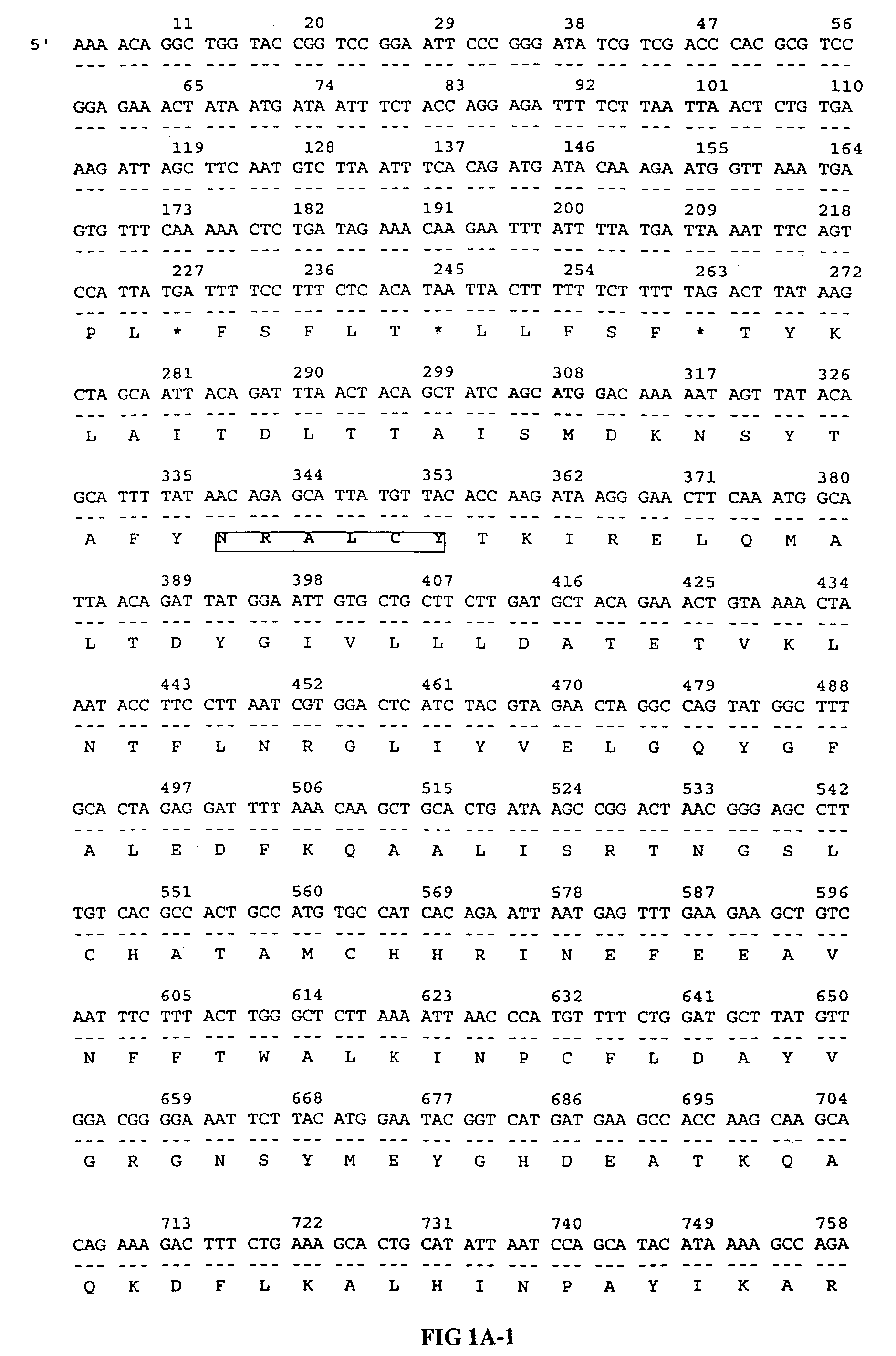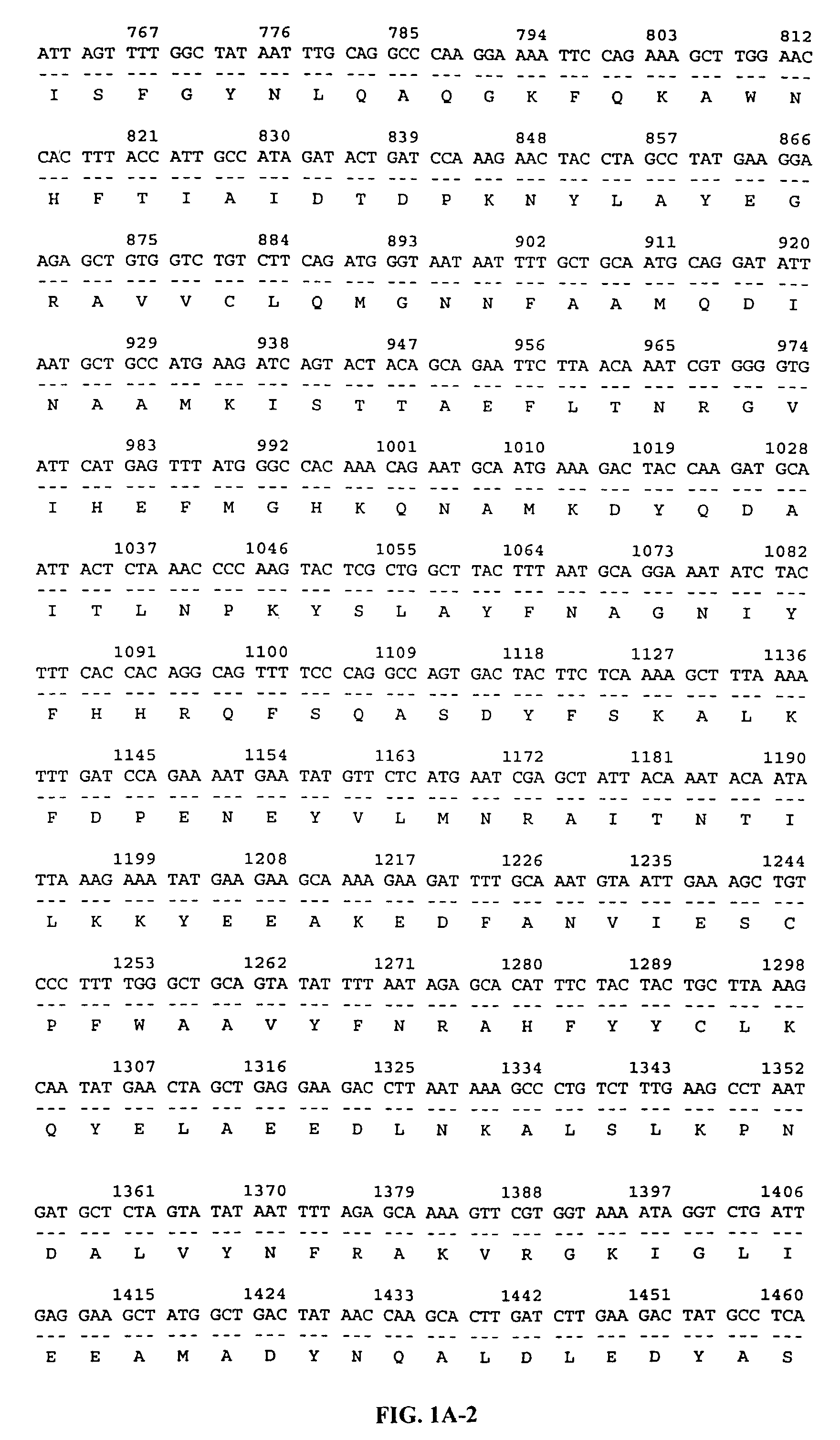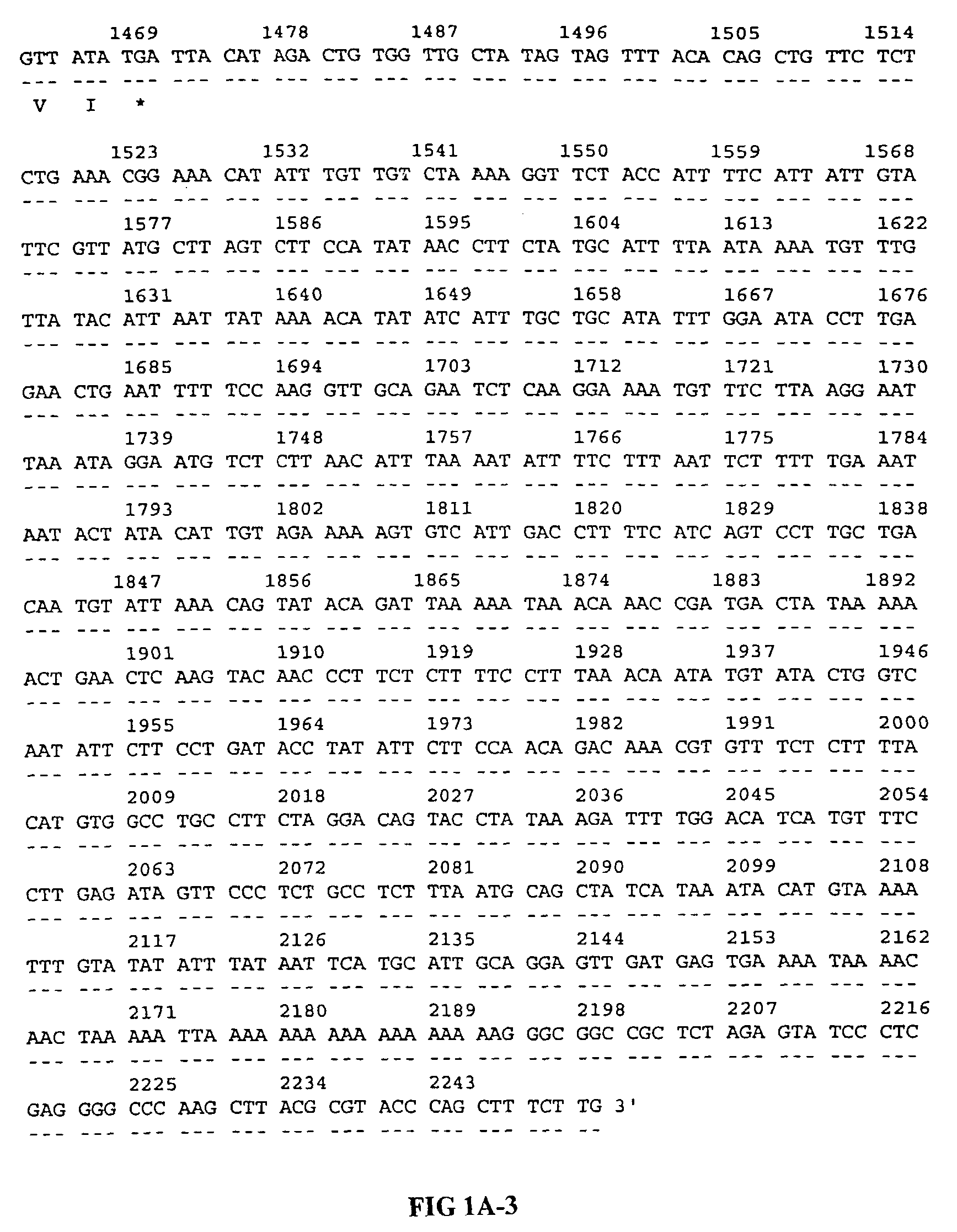Gene expressed in prostate cancer
a prostate cancer and gene technology, applied in the field of 22p4f11, can solve the problems of ineffective and non-toxic systemic therapies, slow progress, general unevenness, etc., and achieve the effect of inhibiting transcription, translation, processing or function
- Summary
- Abstract
- Description
- Claims
- Application Information
AI Technical Summary
Benefits of technology
Problems solved by technology
Method used
Image
Examples
example 1
SSH-Generated Isolation of cDNA Fragment of the 22P4F11 Gene
Materials and Methods
LAPC Xenografts:
[0102]LAPC xenografts were obtained from Dr. Charles Sawyers (UCLA) and generated as described (Klein et al, 1997, Nature Med. 3: 402-408). Androgen dependent and independent LAPC-4 xenografts LAPC-4 AD and AI, respectively) and LAPC-9 AD xenografts were grown in male SCID mice and were passaged as small tissue chunks in recipient males. LAPC-4 AI xenografts were derived from LAPC-4 AD tumors. Male mice bearing LAPC-4 AD tumors were castrated and maintained for 2-3 months. After the LAPC-4 tumors re-grew, the tumors were harvested and passaged in castrated males or in female SCID mice.
Cell Lines:
[0103]Human cell lines (e.g., HeLa) were obtained from the ATCC and were maintained in DMEM with 5% fetal calf serum.
RNA Isolation:
[0104]Tumor tissue and cell lines were homogenized in Trizol reagent (Life Technologies, Gibco BRL) using 10 ml / g tissue or 10 ml / 108 cells to isolate total RNA. Pol...
example 2
Isolation of Full Length cDNA Encoding the 22P4F 11 Gene
[0120]The 22P4F11 SSH fragment (Example 1) was used to isolate additional cDNAs encoding this gene. Briefly, a normal human prostate cDNA library (Clontech) was screened with a labeled probe generated from the 22P4F11 cDNA. One of the positive clones, clone GTP3E10, was 2250 bp in length, and encoded the entire open reading frame of the 22P4F11 gene. The 22P4F11-GTP3E10 cDNA encodes a 387 amino acid protein and contains a predicted mitochondrial signal sequence. The 22P4F11-GTP3E10 cDNA was deposited as plasmid p22P4F11-GTP3E10 with the American Type Culture Collection (ATCC) on Nov. 11, 1998 as has been accorded ATCC Accession Number 98985. The nucleotide and deduced amino acid sequences of the 22P4F11 gene encoded by this cDNA are shown in FIG. 1A (SEQ ID NOS: 1 and 2, respectively).
example 3
Northern Blot Analysis of 22P4F11 RNA Expression
[0121]22P4F11 mRNA expression in normal human tissues was conducted by Northern blotting two multiple tissue blots obtained from Clontech (Palo Alto, Calif.), comprising a total of 16 different normal human tissues, using labeled 22P4F11-GTP3E10 cDNA as a probe. RNA samples were quantitatively normalized with a β-actin probe. The results are shown in FIG. 3A&B. Expression was only detected in testis.
[0122]To analyze 22P4F11 expression in human cancer tissues and cell lines, RNAs derived from human prostate cancer xenografts, normal prostate and a prostate cancer cell line were also analyzed. The results are shown in FIG. 3C. Strong expression was detected in one of the LAPC-4 xenografts, and lower level expression was detected in the LNCaP prostate cancer cell line and in some of the other xenografts. No message was detected in normal prostate.
PUM
| Property | Measurement | Unit |
|---|---|---|
| Fluorescence | aaaaa | aaaaa |
| Chemiluminescence | aaaaa | aaaaa |
| Bioluminescence | aaaaa | aaaaa |
Abstract
Description
Claims
Application Information
 Login to View More
Login to View More - R&D
- Intellectual Property
- Life Sciences
- Materials
- Tech Scout
- Unparalleled Data Quality
- Higher Quality Content
- 60% Fewer Hallucinations
Browse by: Latest US Patents, China's latest patents, Technical Efficacy Thesaurus, Application Domain, Technology Topic, Popular Technical Reports.
© 2025 PatSnap. All rights reserved.Legal|Privacy policy|Modern Slavery Act Transparency Statement|Sitemap|About US| Contact US: help@patsnap.com



